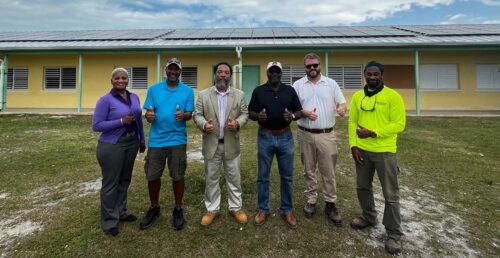
“We are Abaco Strong” — The Bahamas Inspiring Resilience at Scale
Solar and storage solutions are changing lives in the Caribbean nation.
In July 2015, after Hurricane Matthew struck The Bahamas, Dr. Rhianna Neely decided it was the last time they would ride out a storm like this. Power outages, so frequent during these storms, had left her family, which now included a four-month-old baby, in darkness, with no fans or air conditioning to cool them from the blistering heat. “That was hell on wheels,” Neely told RMI.
From that day forward, Neely set up her home for resilience, adding storage backup so that even in the overcast days that followed heavy storms, the energy from her solar panels would still be available. As the director of the government’s department of environmental planning and protection, Neely is now working to strengthen her country’s climate response.
“Climate change in The Bahamas is much more than renewable energy,” Neely said. “It’s a matter of survival on an existential as well as practical level. For one, the country itself is getting smaller, as sea level rise inundates beaches and low-lying areas become uninhabitable wetlands. That rise compromises underground aquifers, meaning the country’s planners must again turn to technology and produce water through reverse osmosis.”
Although The Bahamas has a negligible carbon footprint of its own, the country is determined to show other larger, more polluting countries what can be done, Neely said. “It’s important for us to show that a country of our size can do something to impact the climate, and other countries that are larger — and are having more of an impact on the climate system — should do even more.”
Moving from Dependence to Independence
By Caribbean standards, The Bahamas is prosperous. On a per capita basis, it outranks not only its neighbors but also its tourism-focused competitors like Greece and Croatia. Vacationers flock to the archipelago for the sunshine and pristine beaches, contributing to roughly half of its annual GDP.
For now, fossil fuels power it all. And for all its relative wealth, The Bahamas is roughly 92 percent dependent on fuel imports from outside the country — and at the whim of the price fluctuations that come with it.
Further, Neely and her colleagues are working to put the sun to work not just for tourists on their sun loungers, but for Bahamians in their day-to-day lives. Some high-profile solar power projects have already materialized: a 950 kW solar canopy at the national stadium in Nassau and a first-of-its-kind solar panel array capable of withstanding the kinds of hurricanes expected to become more powerful, and more frequent, as the earth’s temperature rises.
Another first of its kind for The Bahamas, is the recently completed solar and battery microgrid on Ragged Island. That system powers the small fishing community on Ragged with over 90 percent renewable energy thanks to a collaboration between RMI, the government, and the national utility, Bahamas Power and Light. There are also several new solar installations on government roofs over the past year thanks to the support of the InterAmerican Development Bank and RMI. But these projects are just the very start of an ambitious 7-year transition.
Even before the war in Ukraine brought gas prices to eye-watering levels, Bahamian government policy had begun to align with the need to build a better, cleaner energy future for the islands.
The Bahamas has set a target of 30 percent renewable energy production by 2030, a goal that calls for hundreds of new solar and energy efficiency projects. The national utility estimates the country must not only install 260 megawatts of solar energy, but also reduce electricity demand by 1 percent each year for the next ten years.
Making those plans a reality involves a dramatic scaling up of solar capacity from the capital in Nassau out to its more sparsely inhabited “family” islands that account for roughly 30 of the 700 islands that make up the country.
Keeping the Lights on at Schools
In Abaco, a group of family islands that are a two-hour boat ride from Nassau, RMI is working alongside the government and Compass Solar to provide solar and storage systems to three primary schools across Abaco that were heavily damaged in Hurricane Dorian. These systems allow the schools to better fulfill their dual roles as both institutions of learning and emergency shelters for the surrounding community. Yesterday, the nation held a ribbon-cutting ceremony to celebrate these three systems coming online.
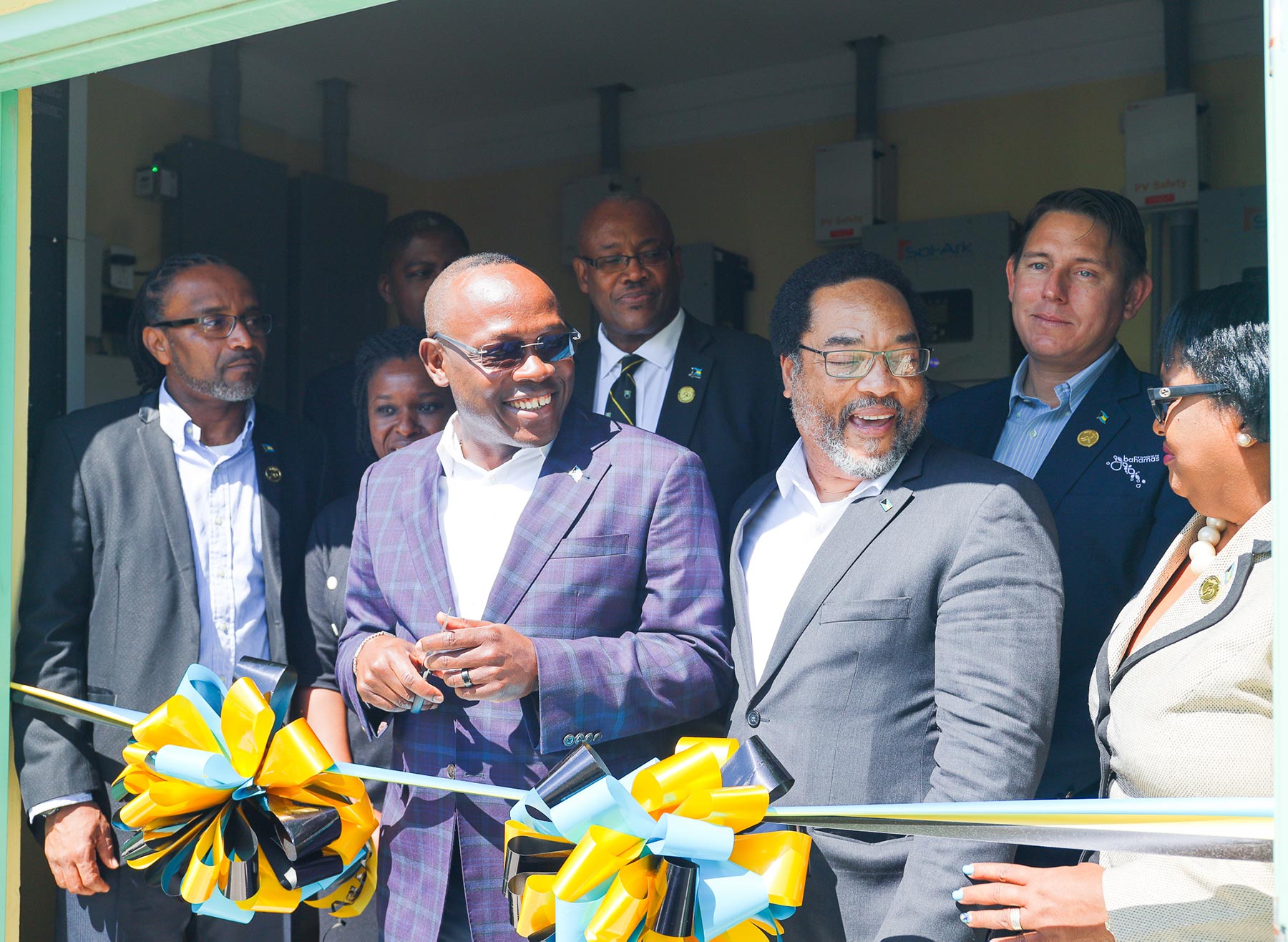
Bahamian Deputy Prime Minister, Hon. I. Chester Cooper, alongside government officials, RMI, and project partners, before cutting the ribbon to celebrate the new systems across Abaco primary schools. Photo credit Compass Solar.
One school in Abaco’s Great Guana Cay has transformed from a facility that experienced as many as five power cuts a day to one that now runs on steady, reliable power from the sun. That’s essential for this school because specialist classes are still taught virtually from the mainland, making a dependable internet connection crucial. Now the only sign they have of a power outage is when the community generator kicks in to ensure cell phone service is still available.
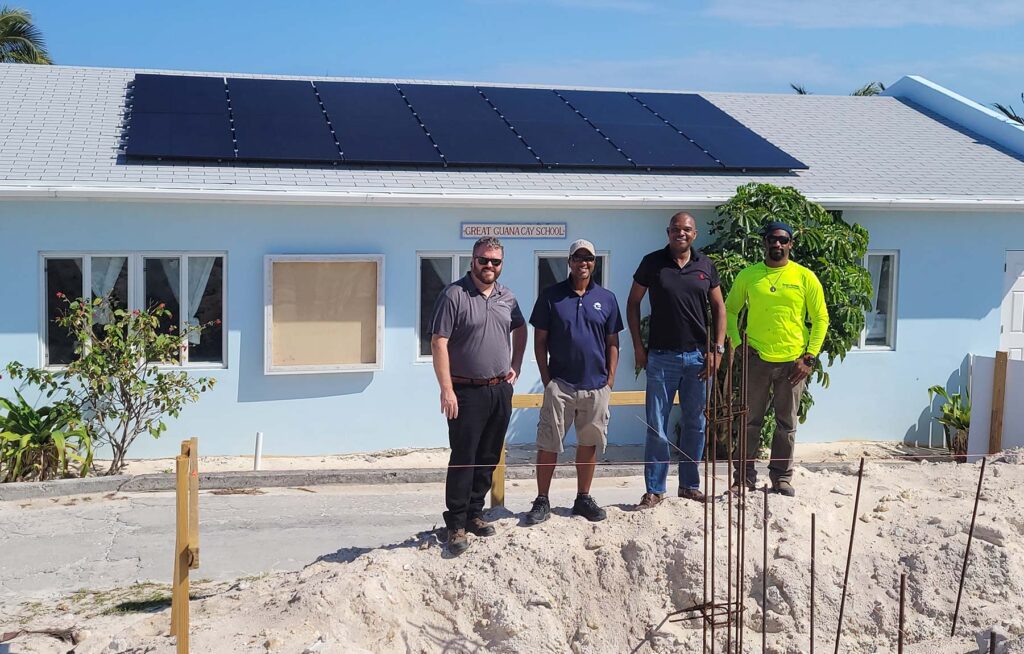
The RMI and Compass Solar Team smile in front of the completed solar and storage installation at Great Guana Cay Primary School. Photo credit RMI.
Tavia Maynard, Great Guana Cay school principal, says the project helps eliminate any learning gap between her students and those in larger schools. “Words can’t express the feeling that we have knowing that even if the power is out elsewhere, our students don’t have to experience that.”
The pupils at Man-O-War Cay school, one of the few Eco-Schools in The Bahamas, have also bought in, even if they display a child’s natural skepticism that this is all too good to be true: “I have to sometimes watch out because they’ll have me sitting in darkness,” Mrs. Deborah Clarke, the school’s principal said, adding that the students are so determined to conserve energy that they will switch off the lights the moment she leaves the room. “I have to explain that Mrs. Clarke is planning on coming back in here to do some work or else they will click these lights off in a hurry,” she laughs.
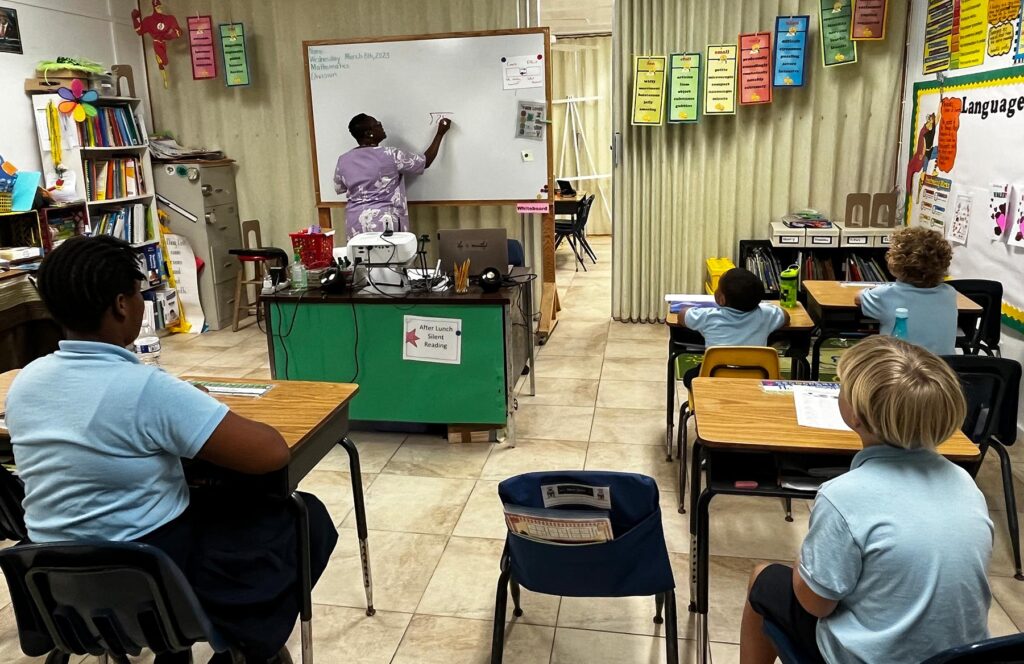
Mrs. Clarke, principal of Man-O-War Primary School, teaches students mathematics. Photo credit RMI.
For Clarke, the transition was as simple as clearing out a closet to make way for battery storage. Those batteries now provide backup power so that, storm or sunshine, the school will enjoy consistent access to electricity.
Clarke said the school’s new power source adds to a resilience already ingrained in its people. After Hurricane Dorian, Clarke said, “People were battered but they were not knocked down. Even though the houses were destroyed, nobody stopped and said, ‘Woe is me,’ they put their hands to the plow and they started work immediately.”
“We are Abaco strong,” Clarke added. “So that means you’re knocked down, but you’re not forgotten and you’re not knocked out, you’re going to rebuild.”
Simone Pinder, a 5th-grade teacher at Central Abaco Primary School, shared how being at the school during the solar and storage installation process taught her a lot. “When I think solar, I just think, sun!” she laughed. “I didn’t know about all that went into putting the panels up. The Compass Solar installers taught me a few things; I never thought it would be so detailed.”
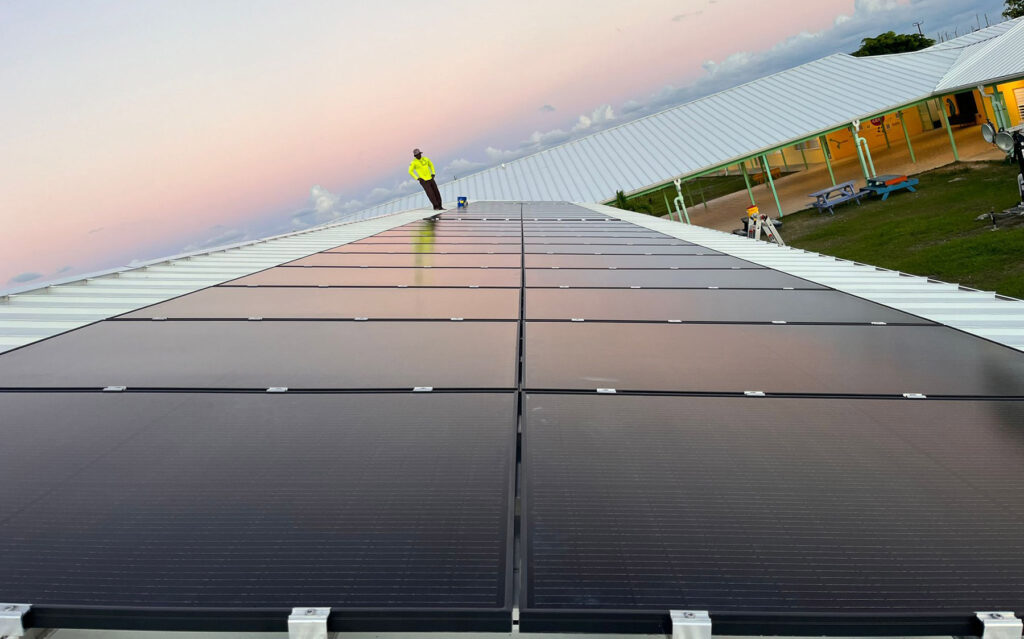
Compass Solar installer at sunrise on the roof of Abaco Central Primary completing the solar installations. Photo credit Compass Solar.
As Pinder emphasized, the school systems are incredibly impactful, but planning and installing renewable energy systems requires skill. To expand the benefits seen within the schools and meet the scale of the country’s need, The Bahamas will need an army of installers.
Creating the Green Workforce
That’s why last month, the government, alongside RMI and with support from the Green Climate Fund, launched a solar assessment and energy auditing training program to support 20 selected participants from Bahamian universities, the utility, and the government in building the skills required to realize clean, resilient energy — at scale. This capacity-building initiative will prepare the cohort of Bahamian engineers, technicians, electrical contractors, and other professionals to actively participate in the country’s pursuit of its sustainable energy goals by providing them with training in solar PV and energy efficiency.
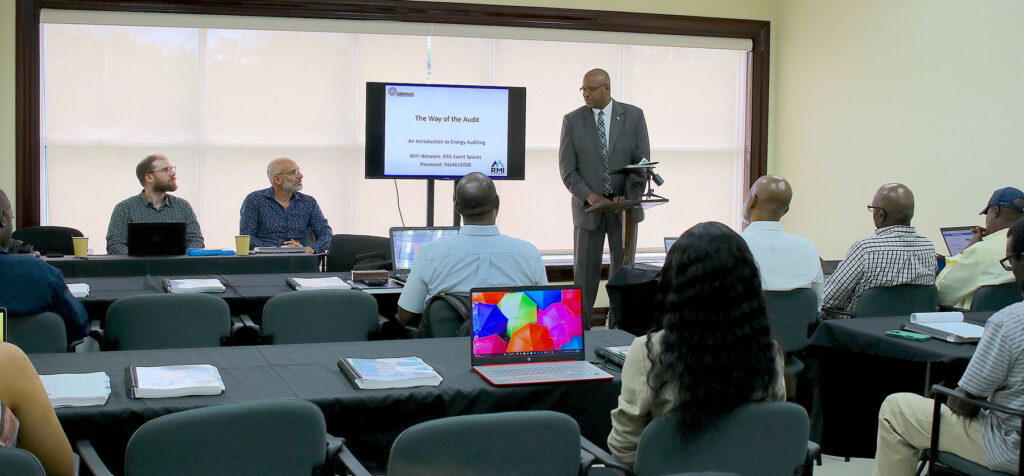
The Minister of the Environment and Natural Resources, Hon. Vaughn P. Miller, gives opening remarks on the first day of the national solar and energy auditing training program. Photo credit Government of The Bahamas.
Philipp Feller, a VP of Solar at Compass Solar System Ltd, a Bahamian-owned solar company that was engaged by RMI to design and install the solar PV systems at the three Abaco schools, sees the value in getting more Bahamians involved in the energy transition: “Just like you’re training plumbers, nurses, engineers, and everyone else, there must be training available so that local companies can pull from a pool of ‘graduates’ that can come into the field and be productive.”
While the appetite to transform energy in The Bahamas is strong, there is still a long road ahead. In the meantime, while the country ramps up its renewable energy capabilities, Neely, the government director, hopes the investments in solar and storage technology will provide frontline relief when the next hurricane inevitably makes landfall. “I think there will be a collective sigh of relief that hey, I’m so happy that we made this investment and that we can see the payoff of the investment right then and there.”